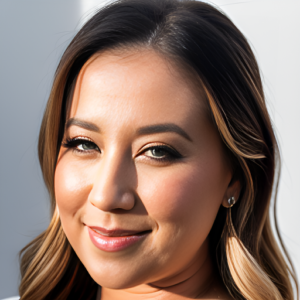Here's what you need to know about how Google Ads AR and virtual try-on can impact your brand.
What is Google Ads AR and Virtual Try-On?
First, let’s start with the basics. Here are the options within Google:
- Virtual Try-On for Beauty (VTO): Available within Google Shopping, allowing users to try on makeup
- Virtual Try-On/AR for Apparel: Uses AI to simulate clothing on different body types.
- 3D & AR for Home Goods: Users can view furniture or decor in their space using their camera
Google has been pushing the envelope with AR, making it easier for customers to engage with products in a more immersive way before committing to a purchase. Through tools like Virtual Try-On, consumers can see how products, like shoes, glasses, or even makeup, will look on them, without ever leaving the search results page, let alone the house.
How It Works:
Shoppers Search for a Product: A shopper searches for a product, like a pair of sunglasses or a new lipstick, on Google.
AR Integration: If your ad is set up to support AR, the search results will include an option for the user to virtually try on the product. This can happen right in the search results page or via Google’s Shopping Ads.
Virtual Try-On: Using their smartphone camera or AR-enabled device, the shopper can virtually place the product on their face, body, or in their environment to see how it looks in real time.
This integration is particularly powerful in visual-heavy industries like beauty, fashion, and home goods, where the decision to buy often hinges on how the product looks in the context of the shopper’s lifestyle or appearance.
Why It Matters for Brands
As a brand, you might be wondering what this means for your ad strategy. The short answer: a lot. AR and virtual try-on technology opens up a whole new realm of possibilities for how your products are presented to potential customers. Here's why you need to pay attention:
- Increased Engagement: AR features drive more engagement. Shoppers spend more time interacting with ads that offer immersive experiences like virtual try-on. The more time a shopper spends interacting with your product, the more likely they are to convert.
- Higher Conversion Rates: When a shopper can see a product in their environment or on themselves, the decision-making process becomes much easier. By providing this tool in your ads, you are lowering the barrier to purchase, which can lead to higher conversion rates.
- Personalization and Trust: Virtual try-on tools help bridge the gap between the digital and physical worlds. Customers can trust their purchase decision more because they can visualize how the product fits into their life. It's more personalized, and personalization means increased trust in your brand.
- Competitive Edge: Many brands aren’t yet using AR in their Google Ads campaigns, which means you have an opportunity to get ahead. By being an early adopter, you can capture the attention of shoppers who are looking for a more interactive and engaging experience.
How to Implement AR and Virtual Try-On in Your Google Ads Campaigns
If you’re ready to get your brand into the world of AR, here's how to make it happen:
Check Your Product Type: AR works best for products that benefit from a visual element, such as beauty, fashion, and home decor. If you sell products that require a visual decision like makeup shades or glasses, this is an opportunity you don’t want to miss.
Integrate AR with Shopping Ads: You’ll need to make sure your Google Ads are set up to show the AR option. This requires creating a feed that supports augmented reality features. If your product images are high-quality and show the product clearly, you’re halfway there.
Work with Google’s Partner Network: Implementing AR in ads requires specific technical setups, including linking Manufacturer Center and Merchant Center accounts and ensuring compatibility with AR asset specifications. Google works with various AR technology providers. You’ll want to partner with the right platform that supports your product category and integrates well with Google Ads.
Optimize for Mobile: AR features rely heavily on mobile engagement, so make sure your ads and landing pages are mobile-friendly. Shoppers need to be able to seamlessly transition from discovering your product in search results to trying it on via their phone.
The Impact on Brand Performance
It’s simple: integrating AR and virtual try-on tools can boost engagement, trust, and ultimately sales. For brands in beauty, fashion, and home goods, AR is quickly becoming a non-negotiable feature. Here’s why: Increased Time on Site: Virtual try-ons keep customers engaged longer, which can lead to higher purchase intent.
- Better Return on Ad Spend (ROAS): With higher engagement and more conversions, your ROAS will likely see a noticeable improvement.
- Brand Differentiation: Offering a cutting-edge, immersive experience can differentiate your brand from competitors still relying on static images and traditional ads.
Next Steps: How to Prepare for Google Ads AR
- Evaluate Your Product Line: Determine which of your products are suitable for AR. If your products are visually-driven, this is a great place to start.
- Invest in High-Quality Visuals: Your products need to shine in a virtual environment. High-quality images and videos are a must.
- Prepare for Mobile Traffic: Ensure your website is mobile-optimized. Many users will access AR through their smartphones.
- Monitor the Metrics: As AR and virtual try-on roll out, keep an eye on metrics like engagement rates, time on page, and conversion rates. Track the impact and refine your strategy as you go.
The Bottom Line
AR and virtual try-on features are game-changers for brands, especially those in the home decor space. They offer a deeper, more personalized shopping experience that boosts customer engagement and increases conversion potential. If you’re in a visually-driven industry and not yet using AR in your Google Ads, it’s time to get on board. The future of e-commerce is here, and it’s interactive, immersive, and extremely impactful.

